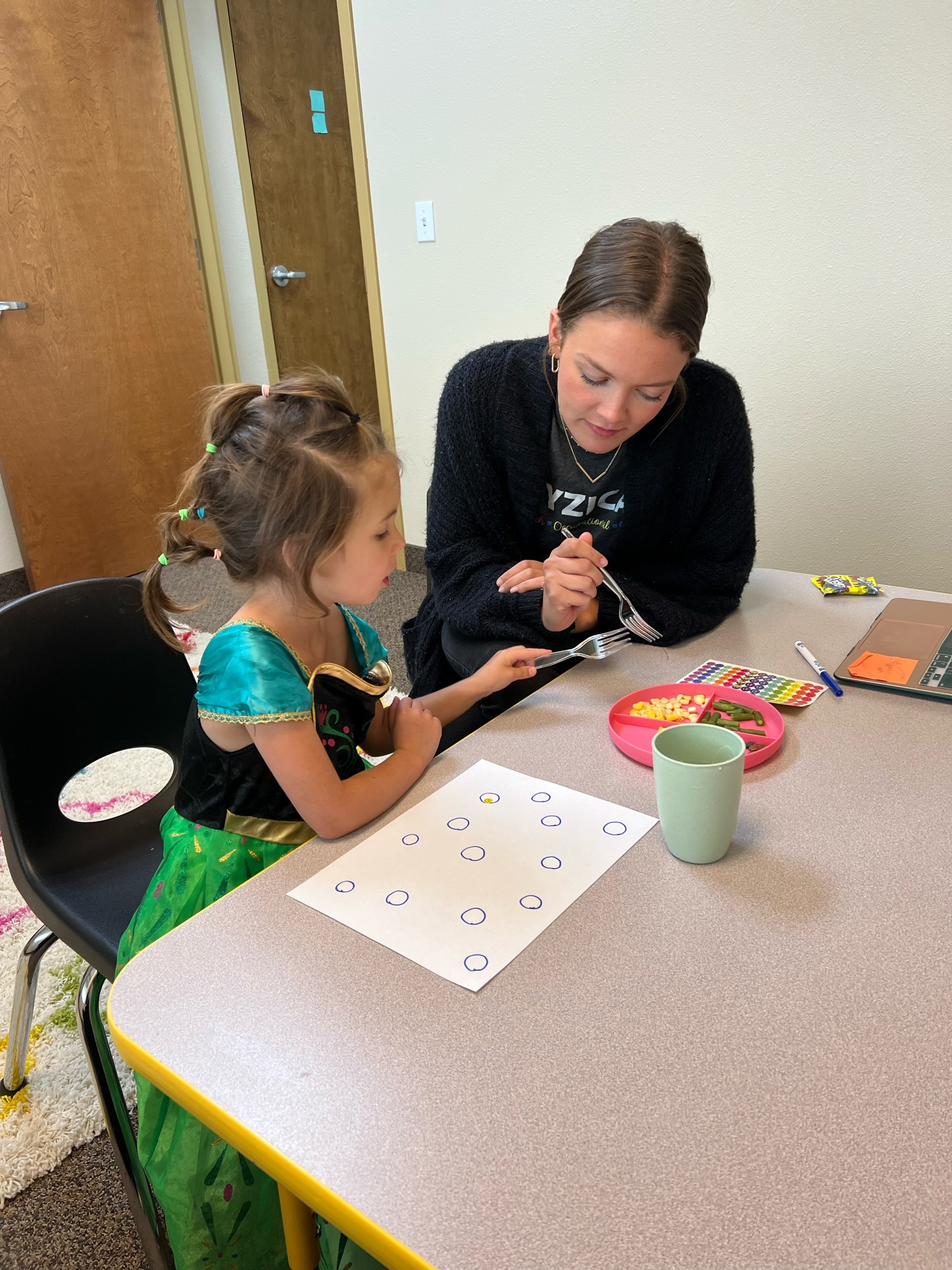Expert Support for Food Aversion Therapy Long Island
Wiki Article
Navigating the Path to Successful Feeding: Cutting-edge Methods and Treatments for Efficient Feeding Therapy
Are you struggling to discover reliable techniques and treatments for effective feeding treatment? Look no even more. This article will lead you via the path to success, giving ingenious techniques to evaluate feeding difficulties and established attainable objectives. With evidence-based strategies, you'll find out just how to address sensory processing problems and use assistive modern technology and adaptive devices. And also, we'll reveal you the significance of working together with family members and caretakers for optimal feeding end results. Obtain ready to navigate the course to successful feeding!Assessing Feeding Obstacles and Recognizing Objectives
You need to begin by assessing your child's feeding challenges and determining specific goals for their therapy. This step is crucial in establishing an efficient feeding therapy strategy. Begin by observing your kid's feeding patterns and habits. Try to find any difficulties or aversions they may have in the direction of particular foods or appearances. Bear in mind of any type of sensory or physical problems that might be impacting their ability to consume. You can then establish particular goals for their treatment when you have identified these obstacles. These objectives must be realistic and attainable, concentrating on improving your youngster's feeding abilities and general nourishment. You may set an objective for your kid to be able to tolerate a broader range of textures or to self-feed with utensils. It is essential to communicate these objectives with your kid's feeding therapist so they can tailor the treatment sessions to resolve these details difficulties. By evaluating your youngster's feeding challenges and setting objectives, you are taking the primary step in the direction of helping them create successful feeding skills.Implementing Evidence-Based Approaches for Feeding Treatment
Carrying out evidence-based approaches for feeding therapy can lead to positive end results for youngsters. You are guaranteeing that the treatments utilized are sustained by scientific study and have actually been verified effective when you include these strategies right into your kid's treatment plan. This approach increases the possibility of success and helps resolve the specific feeding obstacles your kid might be experiencing.By adhering to evidence-based methods, you can give your kid with the best possible treatment and assistance. These techniques may include utilizing a variety of sensory experiences throughout nourishments, such as exploring different appearances and flavors, to motivate approval of new foods. Additionally, executing habits modification techniques can aid attend to fussy consuming habits and advertise much healthier eating patterns.
An additional important aspect of evidence-based feeding treatment is including the family in the treatment process. By giving education and assistance to parents and caretakers, they can play an energetic function in helping their child conquer feeding challenges. This collaborative method boosts the performance of treatment and advertises lasting positive adjustments in your kid's consuming behaviors.

Attending To Sensory Processing Issues in Feeding Treatment
Resolving sensory processing concerns in feeding therapy can be challenging, however it is vital for advertising a favorable consuming experience for children. When you encounter a youngster with sensory handling troubles throughout nourishment, it is essential to recognize that their reactions to specific structures, preferences, scents, and even audios are not willful (food therapist long island). By acknowledging and attending to these concerns, you can aid create an encouraging atmosphere that urges healthy eating habits
This approach enables the read youngster to end up being acquainted with the food and its sensory homes at their own rate. Furthermore, providing a selection of tastes and appearances can aid desensitize their sensory system and expand their food choices.
Involving the youngster in sensory play activities can also be beneficial. Urge them to check out various appearances, such as squishing, squeezing, or touching different food items. This can aid normalize sensory input and reduce aversions to specific structures.
One more vital element is supplying a structured and calm eating environment. Lessen disturbances, such as intense lights or loud noises, which can bewilder their senses and hinder their capacity to concentrate on consuming. Creating a predictable routine and using aesthetic schedules can likewise assist the youngster feel more secure and in control throughout mealtime.

Utilizing Assistive Technology and Adaptive Tools
Making use of assistive modern technology and adaptive devices can considerably boost the feeding experience for youngsters with sensory handling difficulties. Mealtime can be difficult and frustrating when you have trouble with sensory processing. With the right tools, you can make it a more enjoyable and effective experience.One choice is making use of specialized utensils and plates made to fit your requirements. These utensils may have textured handles or a larger grasp, making them simpler to hold and control. Plates with separated areas can help divide various foods and stop them from touching, which can be a resource of discomfort for some children.
Along with specialized plates and utensils, there are likewise assistive tools that can be utilized throughout feeding. As an example, a heavy vest or lap pad can provide deep pressure input, assisting to calm and regulate your sensory system. A shaking toothbrush or chewable fashion jewelry can provide dental sensory stimulation, making the act of eating extra satisfying.
Technology can likewise contribute in enhancing the feeding experience. There are apps and tools available that can offer auditory or aesthetic cues, such as timers or triggers, to help you stay focused and arranged throughout nourishment.
Teaming Up With Households and Caregivers for Effective Feeding End Results
When working together with caregivers and family members, you can interact to develop a nurturing and supportive setting for effective feeding end results. By entailing family members and caregivers in the feeding treatment process, you can acquire useful insights into the child's feeding preferences, challenges, and routines. food therapist farmingdale. This partnership enables for a holistic approach to feeding therapy, dealing with not only the physical facets however also the psychological and psychological elements that might influence a youngster's feeding capacitiesOne trick element of collaborating with caregivers and family members is supplying education and her response training. By outfitting them with understanding and skills, they can proactively take part in the feeding treatment procedure and support the child's progress beyond treatment sessions. This can include teaching them feeding techniques, techniques for managing mealtime habits, and understanding the significance of uniformity and regimen go to this website in developing healthy consuming habits.
Furthermore, entailing family members and caretakers in objective setup and therapy preparation ensures that their perspectives and objectives for the kid are taken into account. By collaborating, you can create practical and achievable objectives that line up with the family members's priorities and worths - food therapist farmingdale. This collective approach fosters a feeling of ownership and empowerment, creating a solid foundation for effective feeding end results
In addition, open and regular communication with caregivers and families is vital for efficient partnership. By maintaining recurring discussion, you can address worries, provide support, and make required changes to the feeding therapy strategy as required. This communication additionally permits sharing progress updates, commemorating accomplishments, and recognizing any kind of obstacles or obstacles that may occur.

Verdict
Congratulations on completing this write-up on browsing the course to successful feeding! You have discovered various methods and interventions for efficient feeding therapy, such as assessing obstacles, implementing evidence-based techniques, addressing sensory handling issues, and making use of assistive technology. By teaming up with caregivers and households, you can guarantee successful feeding outcomes. Bear in mind to constantly remain innovative and proactive in your strategy to feeding treatment. Maintain up the magnum opus!It's crucial to connect these goals with your kid's feeding therapist so they can customize the treatment sessions to resolve these specific obstacles.Executing evidence-based approaches for feeding treatment can lead to positive results for kids.Resolving sensory processing problems in feeding therapy can be challenging, yet it is important for advertising a favorable consuming experience for youngsters. By entailing family members and caregivers in the feeding therapy procedure, you can get important insights right into the kid's feeding obstacles, behaviors, and preferences. By equipping them with understanding and skills, they can actively participate in the feeding therapy process and support the youngster's development outside of treatment sessions.
Report this wiki page